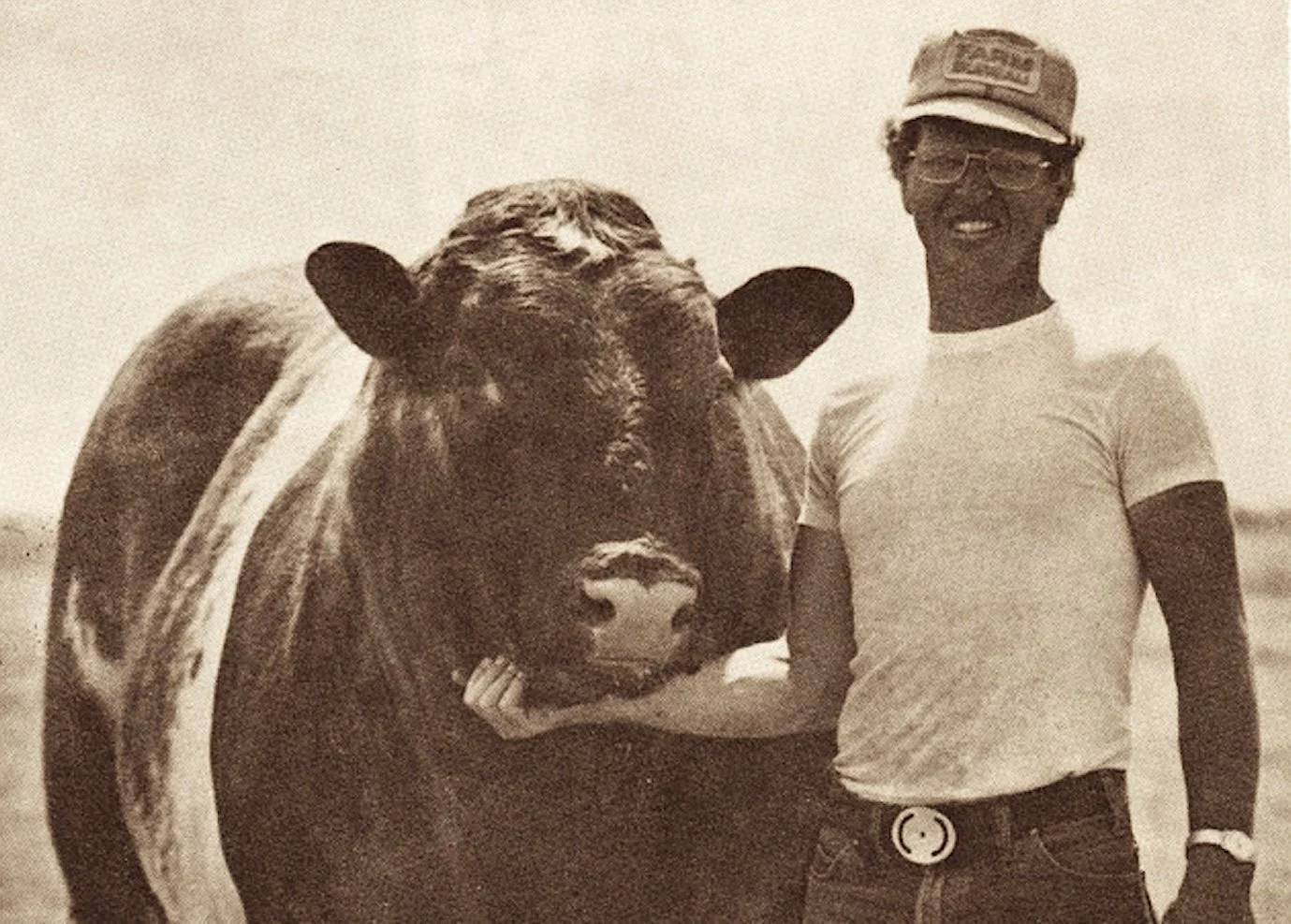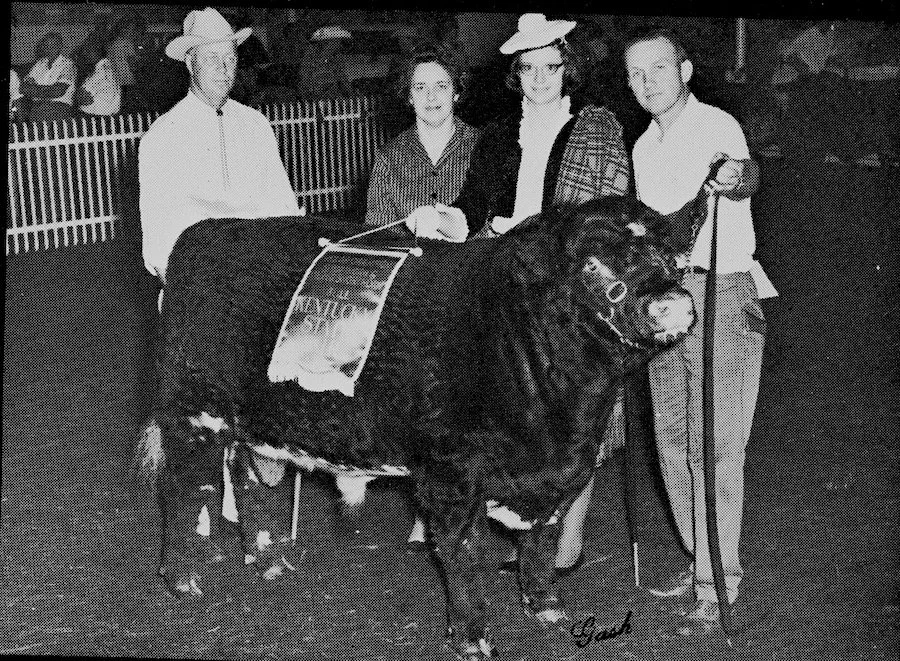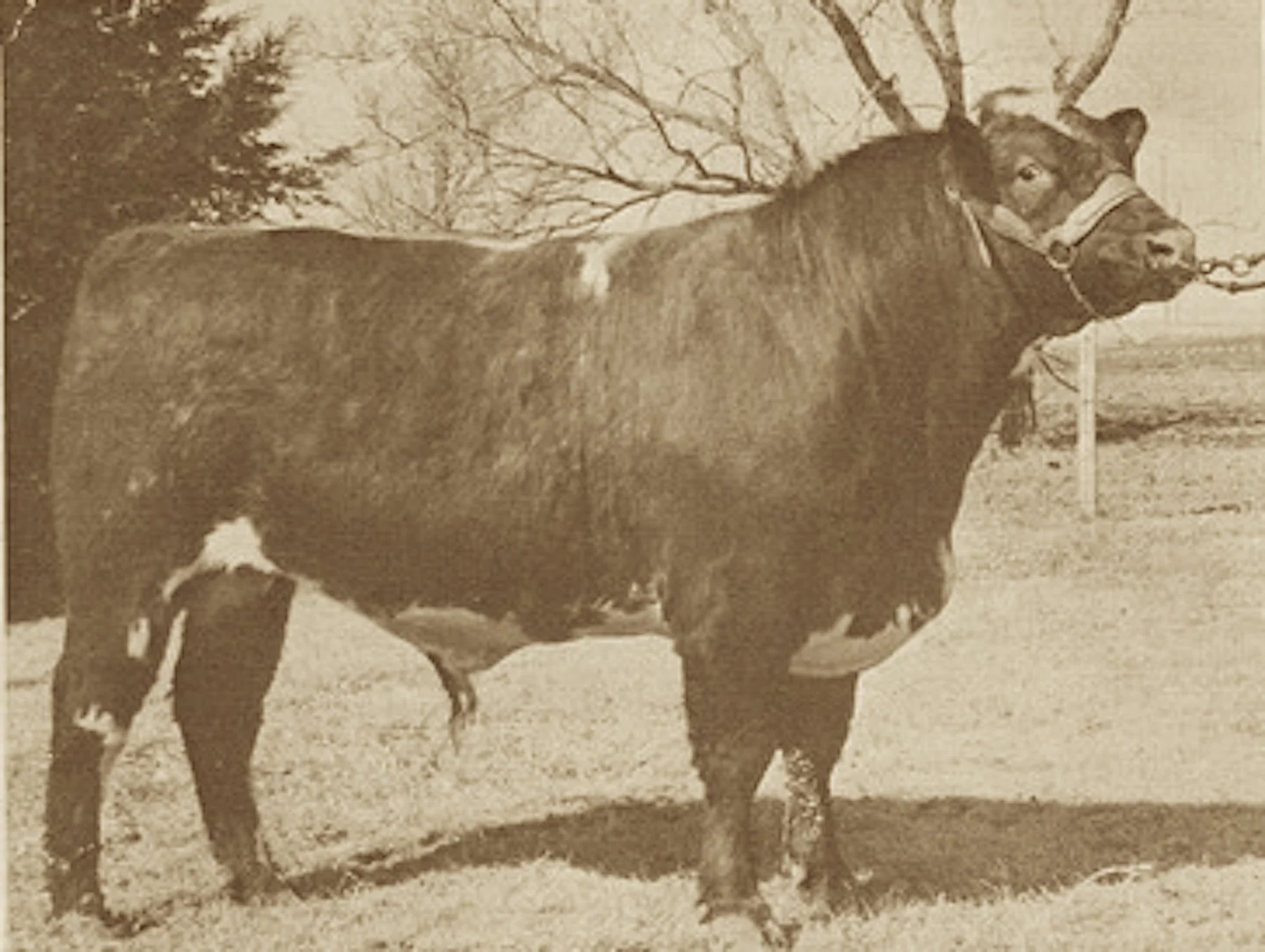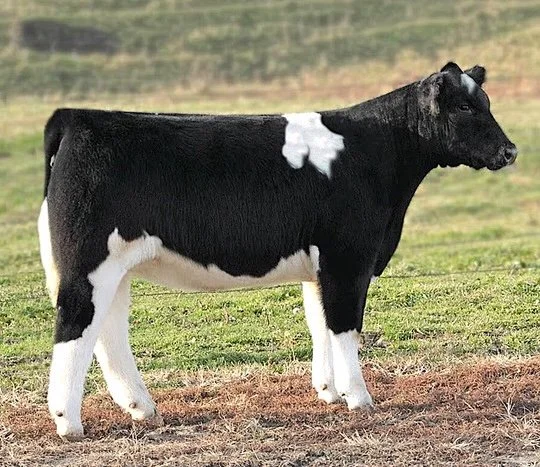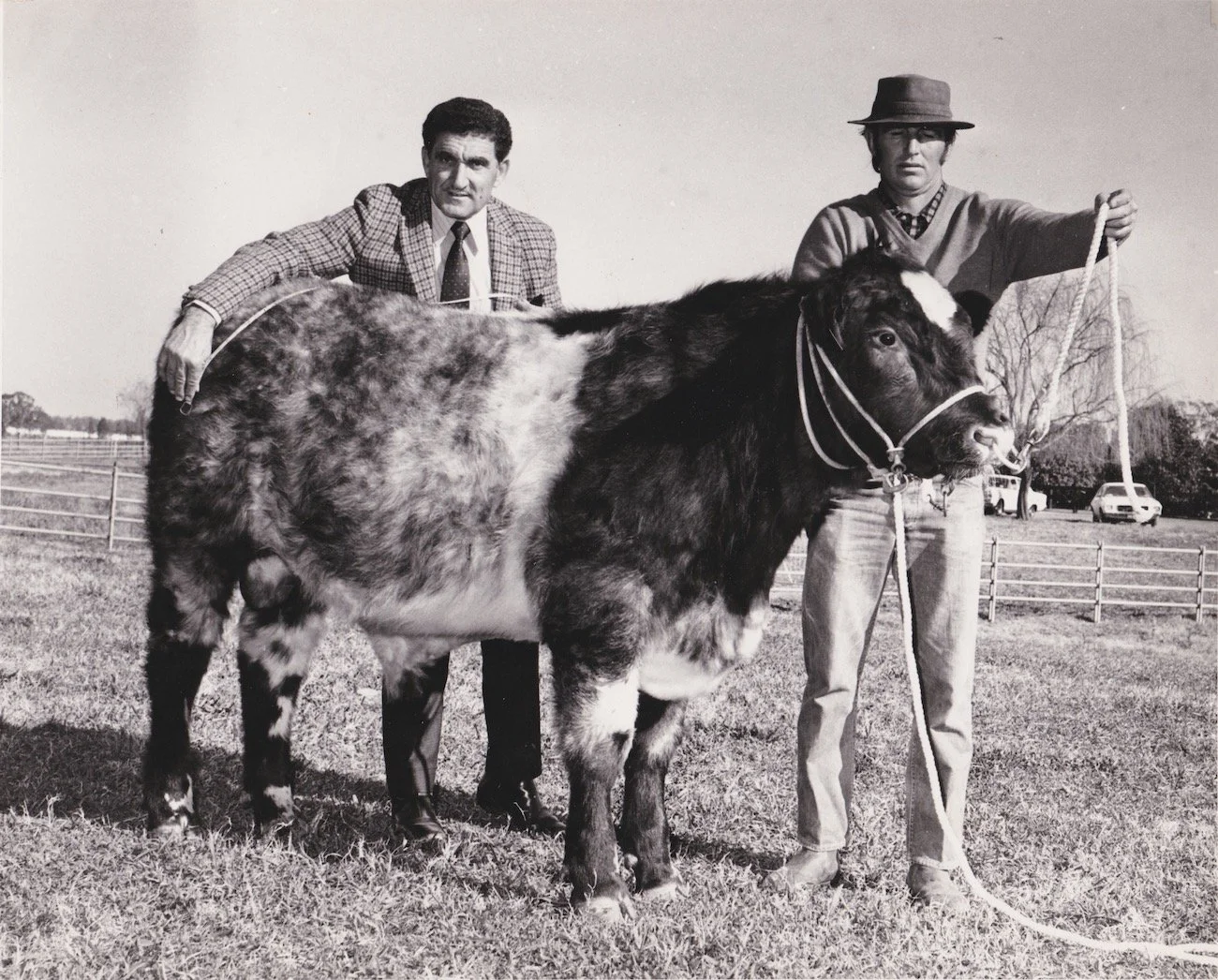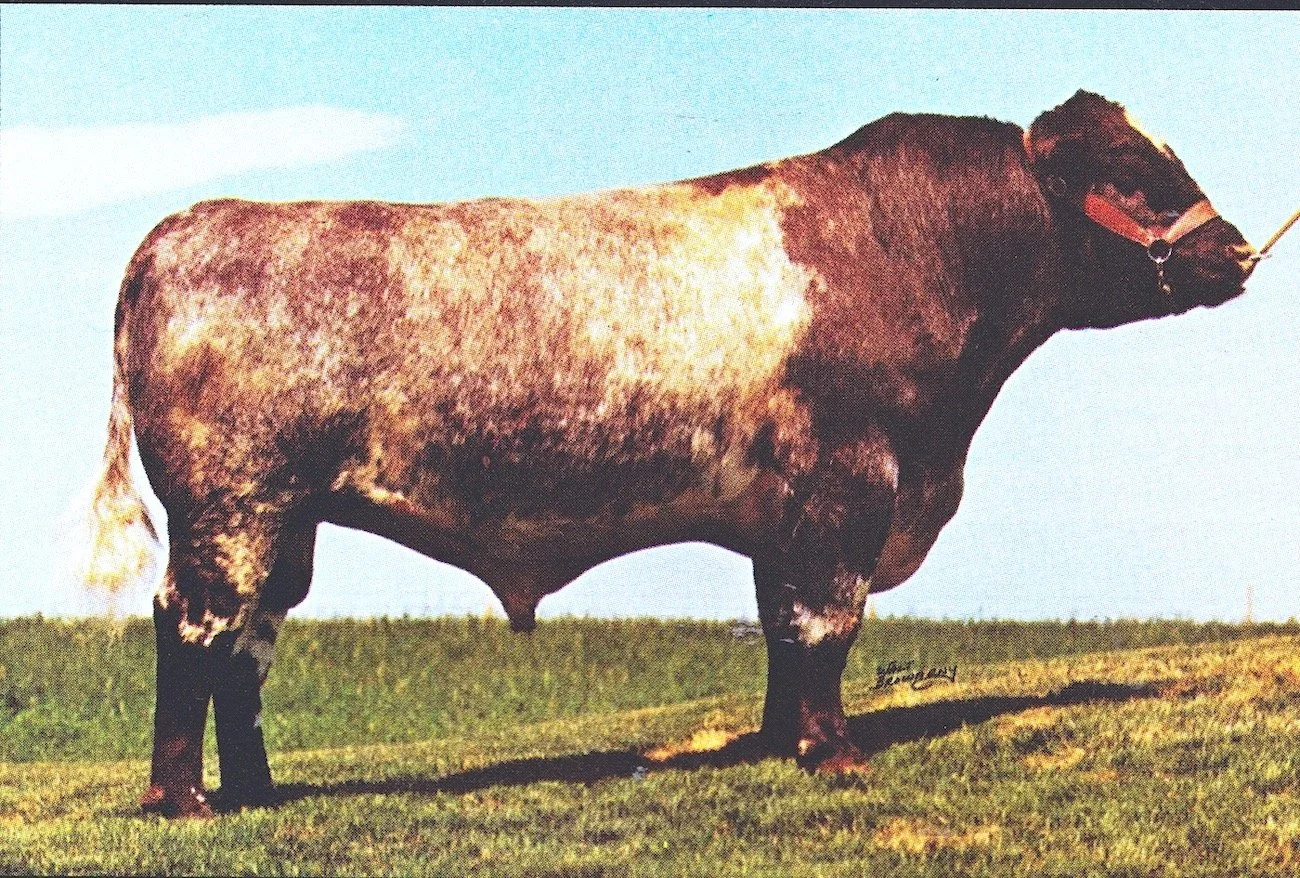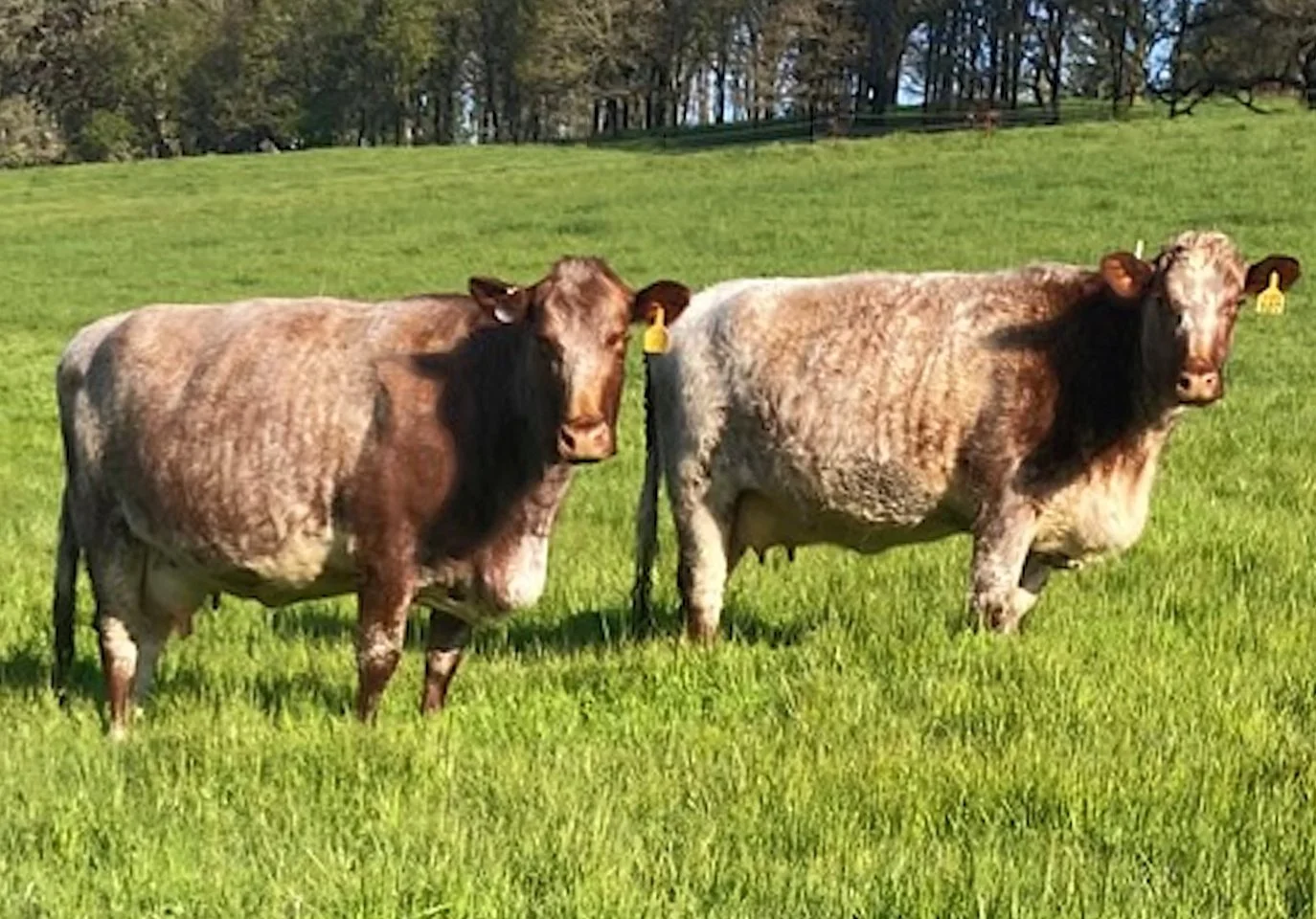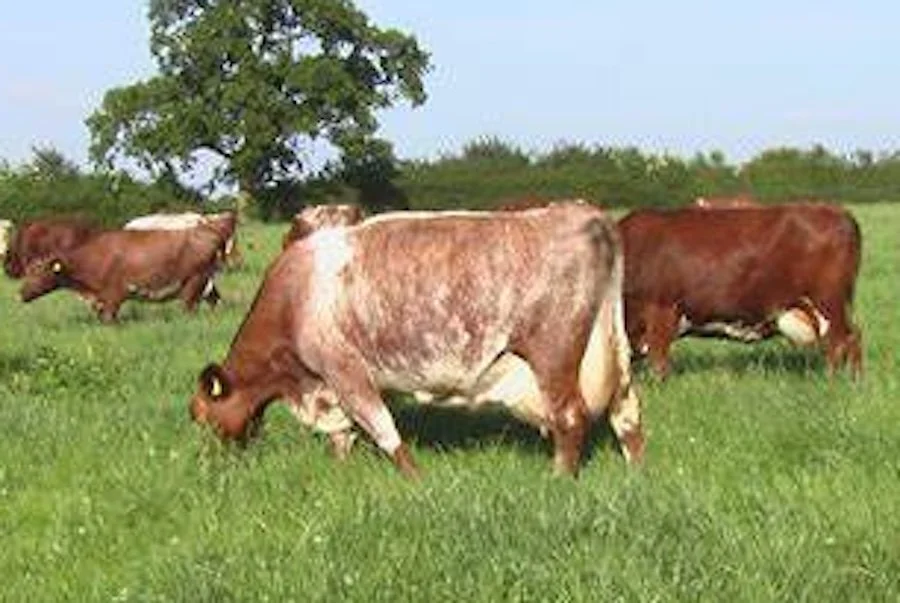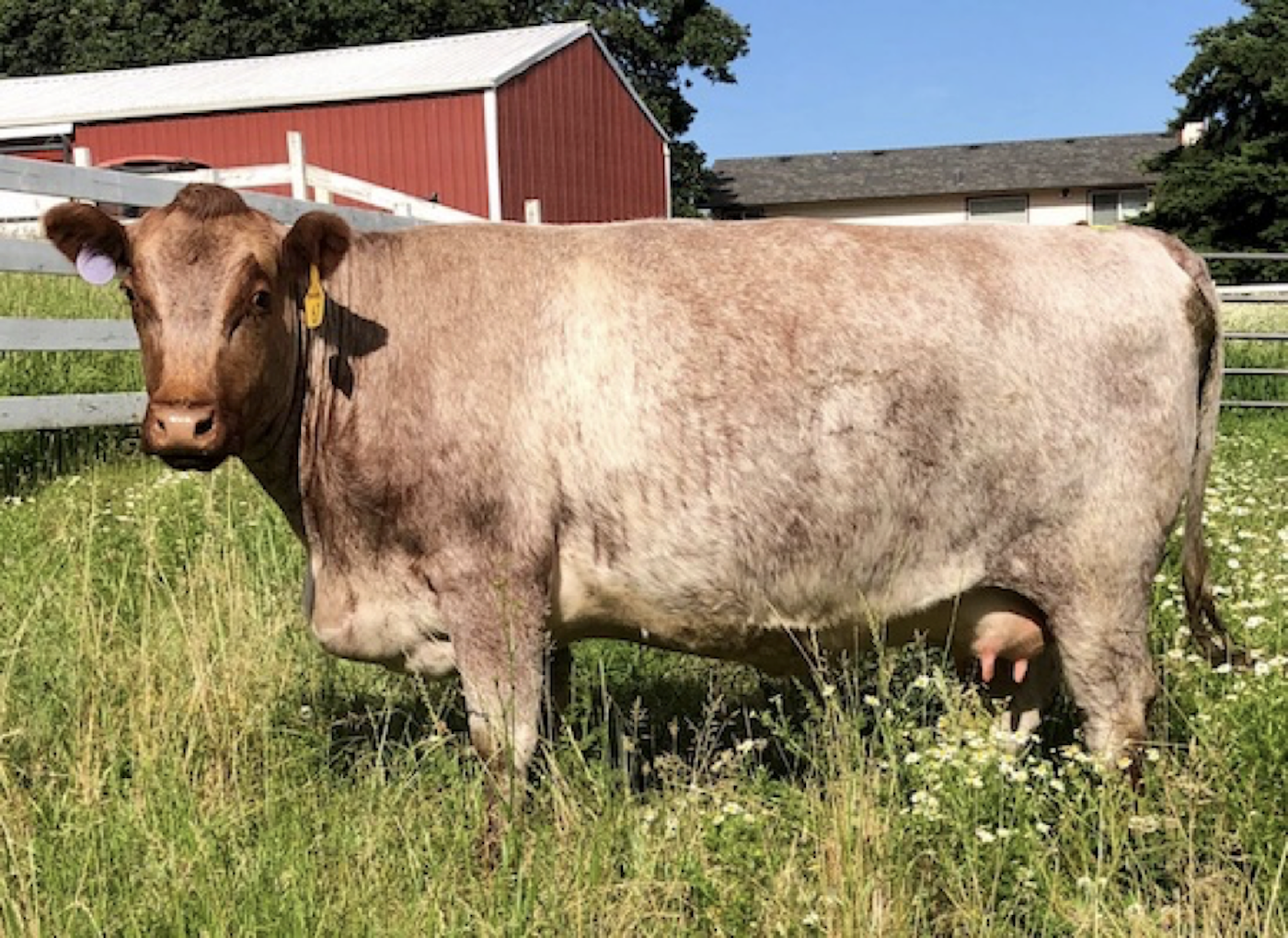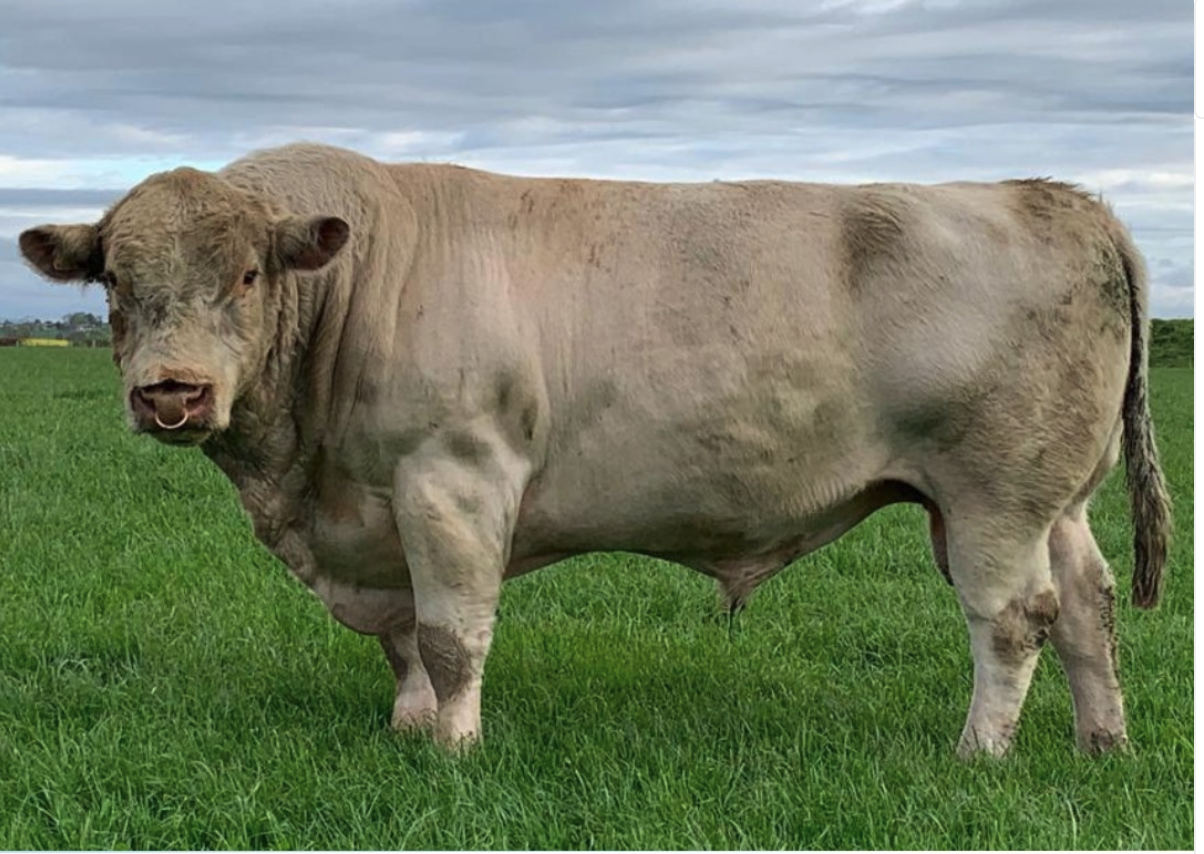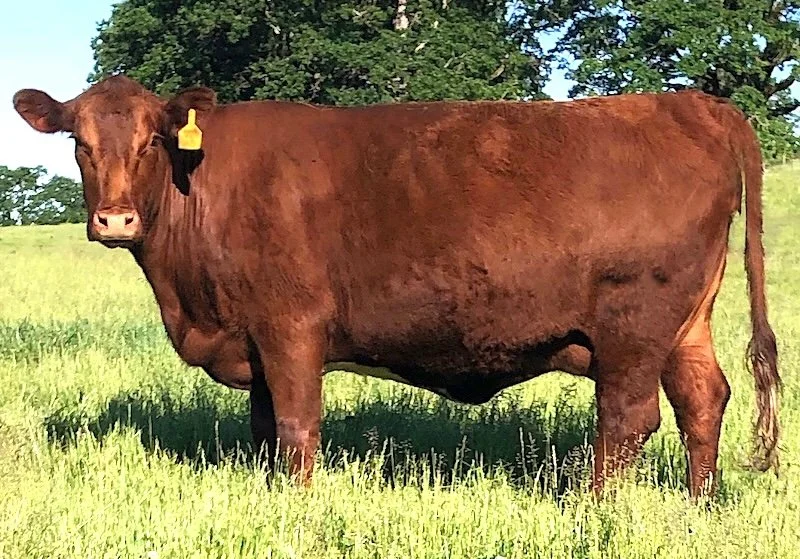Presented at the 18th World Shorthorn Conference on July 14th, 2025 in Brandon, Manitoba, Canada
by Joseph A. Schallberger, DVM PhD
Co-owner of Whispering Hills Farm and Co-founder of the Heritage Shorthorn Society
Dual Purpose Heritage Shorthorn Cow
(Additional visuals were used in the actual presentation besides the photos included below)
I want to thank the World Shorthorn Conference and the Canadian Shorthorn Association for giving me the opportunity to discuss Heritage Shorthorns and how they can play an important role in strengthening Modern Shorthorns. A special thank you to Grant Smith who has facilitated my appearance here today. I would be amiss in not giving credit to my wife, Dr. Susan Schallberger, who was instrumental in putting this talk together through suggestions and editing.
My Introduction to the Shorthorn Breed:
Before discussing the Heritage Shorthorn breed I think it is important to provide a little background as to how I became involved in Heritage Shorthorns. About 20 years ago my wife and I decided to expand our farming operation. We had already been raising and selling Registered Suffolk sheep across the USA and Canada for almost 25 years. After extensive research we came to the conclusion that the Shorthorn breed was for us. Even though we were both Veterinarians, and I had grown up on a large dairy farm in the 50’s and early 60’s, we had little knowledge of the Shorthorn breed when we started. Perhaps a better word to describe our initial involvement with the Shorthorn breed would be naive.
We purchased 3 bred heifers from a well known Shorthorn breeder in the Eastern USA that still sells Shorthorns today. They were selected from a group of about 50 yearling heifers. Despite the high price we paid for them, they exemplified a great many of the problems that permeate Modern Shorthorns today. Calving difficulties, bad udders, breeding issues, and poor maternal instinct were some of the problems we faced. We had absolutely no idea that what we had purchased were actually Shorthorn, Maine Anjou, and Red Angus crosses. We thought a purebred Shorthorn was all Shorthorn. Little did we know. As a result we were at a crossroad: do we sell out and forget our “Shorthorn Experiment” or do we go in a completely different direction with our herd trying to find a different route to success. Fortunately we contacted a Shorthorn breeder in Nevada, Jack Barnes, who had been around Shorthorns almost since he was born, and he was totally dedicated to the purity of the breed. More importantly he had avoided the whole show aspect of Shorthorns and he had distain for the crossbreeding scheme that was being promoted by breed associations and most Shorthorn show cattle enthusiasts under the guise of increasing Shorthorn profitability. Talking with Jack Barnes was a total enlightenment for us. He informed us about a small number of Shorthorn breeders in the USA, who had not been caught up in the promotional mantra that crossbreeding makes Shorthorns better. Armed with the knowledge which Jack had given us we decided to sell the Shorthorns we had and start over with Shorthorns that had not been crossed up. The American Milking Shorthorn Society had a program they called “Native” which was separate from their own crossbreeding program with Red and White Holsteins. The “Native Shorthorns”, were traditional Shorthorns that had their pedigrees researched and they traced only to the Coates Herd Book of 1822—no crossbreeding. This became the basis for our involvement in the identification and breeding of what are now known as Heritage Shorthorns. I will not go through all the difficulties that we experienced to find a group of heifers that became the basis of our Heritage Shorthorn herd but suffice it to say we were very judicious in our selection of breeding stock because we were on a new “mission”.
Shorthorn Terminology:
The name Heritage Shorthorn first appeared in 2015 as a way to encompass all Shorthorns (Dual Purpose, Beef, and Dairy) that completely trace their ancestry only to the 1822 Coates Herd Book. There are no other breeds of cattle intermingled with the Heritage pedigrees in contrast with Modern Shorthorns that may contain the blood of other breeds such as Maine Anjou, Red Angus, Holstein, and many others. The transition from the Heritage Shorthorns to Modern Shorthorns (crossbreds) primarily started in the 1970’s as breed associations around the world opened their herd books to allow registration of mixed breed cattle. This was done to rapidly remake the Shorthorn breed to compete with Holsteins on the milking side and Angus on the beef side. Breed associations and breeders were looking for a “quick fix” to the shortcomings at that time. They along with certain breeders, show judges, and animal scientists promoted a false premise that introducing other breeds into the Shorthorn breed would accelerate improvement in Shorthorns when in actuality a better answer was “right under their noses”—selectively using the diverse positive attributes that already existed in Shorthorns to improve them so they could compete for market share in the cattle industry while maintaining their breed purity.
Heritage Bull: “Canadian Image”
Heritage Bull: “Hub’s Director”
All Native Shorthorns are Heritage Shorthorns but the term Native has fallen out of favor because of its linkage with many negative connotations in today’s society. As the heritage livestock movement has ballooned, associating Heritage Shorthorns with it has created tremendous new marketing opportunities for Heritage Shorthorn breeders, and has eliminated the negativity surrounding the usage of the word “native”. In truth Heritage Shorthorns today are really a separate breed of cattle that are distinguished from Modern Shorthorns which have varying degrees of other cattle breeds incorporated into their gene pool.
Modern Shorthorns, in most countries around the world today, have little resemblance to the Shorthorns of the past because Modern Shorthorn breeders, especially in the USA, have embraced a different type of animal and wedded their progress and competitiveness in the cattle industry today to EPDs or EBVs and to show cattle. Unfortunately this approach is fraught with problems and is rapidly losing out to other breeds of cattle, especially Angus. Shorthorns in the USA are no longer even ranked in the top 10 beef cattle breeds by numbers registered. Where as Shorthorns were once the most popular cattle breed in the world they have become eclipsed by other breeds because Shorthorns have lost their way. Debate is finally emerging about the value of EPDs and EBVs in cattle selection because of the low inheritance of many traits, lack of accurate input data (most breeders do not submit information about their Shorthorns), and the fact phenotype is totally left out of the equation. Without empirical information a Shorthorn can have great EPDs/EBVs and yet be a disaster structurally--a reality conveniently left out by the proponents of EPDs/EBVs. One only has to look at the Holstein breed around the world for proof. I can speak with authority on this subject because I grew up on a large dairy farm in the 1950s and early 60s that consisted mainly of Holsteins that resembled the Beef Friesians of today except they milked extremely well even back then. They often were productive, milk wise, until they were 10-12 years of age. Today the Holstein breed in the USA, traces almost entirely to only two Holstein bulls because the emphasis has been only milk volume and butterfat (milk solids) production. The result has been high producing cows that rarely last past 3 lactations, have severe structural problems, decreased fertility, increased calving difficulties, increased genetic defects, have special dietary needs, and have increased susceptibility to many diseases because of depressed immune systems. I make this statement as a Veterinarian who has watched this happen. Modern Shorthorns in the USA are primarily a show breed now, and mostly trace to one particular show bull, which is a strong indication of both inbreeding and loss of valuable genetic diversity. The constant tweaking of algorithms to make EPDs and EBVs supposedly more accurate, according to the so called experts, demonstrates their inherent inaccuracies. EPDs/EBVs were originally designed only for “in herd” use where I believe they have value. Now with breed associations and individual breeders using them as marketing tools their usefulness has become mired in controversy.
Shorthorns are losing their relevance in the commercial cattle industry worldwide, especially with regard to size and growth rate. When breeds like Angus are now promoting bulls that produce offspring that can be 500kgs (1100 lbs) at 205 days of age the handwriting is and has been on the wall. Anyone who pays attention to evolving information realizes how and why Angus have taken over. As an example I have visited Australia over 10 times during the last 40 years. Forty years ago Angus were growing in popularity but were not as dominant as they are today. Driving through the countryside in West Australia in 2023 I was amazed by the number of Angus that were there compared to when I last visited back in the 1980s. Growth rate, marketing, and breed support by Nutrien ( a worldwide conglomerate of agricultural companies), have all played a role in the shift to Angus in Australia—a market once held by Shorthorns. The recent loss of the Thousand Guineas program in Australia, which paid a premium for well marbled Shorthorn Beef, has only hastened this transition to Angus. In one sense these trends are worldwide--even in South America the traditional pastoral approach in the grasslands of Argentina, Brazil, and Uruguay is being transitioned toward a feedlot model with Angus being a major part of this trend.
Shorthorns Over the Last 75 Years:
Prior to 1959, almost all Shorthorns were traditional (Heritage by pedigree). When I look at the recent 75 years of the Shorthorn breed it can really be broken down into four periods: 1950-1965 Belt Buckle era, 1965-1975 Heritage Shorthorn era, 1975-2000 Exotics And Irish era, and the 2000-today show dominant/double muscle era. There was overlap in each of these eras but they each represent major shifts in the type of cattle Shorthorn breeders were producing.
Belt Buckle Era: Champion Yearling Bull
The Belt Buckle era could also be called the “Baby Beef Era” because Shorthorns were down-sized to meet the demands of the “Show Market”. Semi-dwarf and dwarf genetics found their way into the breed. This trend was also seen in several other cattle breeds driven by show breeders, judges, and the lack of foresight. Definitely a “dark period” in the Shorthorn breed.
Heritage Bull: HHKA Buttercup’s Prince 20th
I would guess most audience members here today have never heard the 1965-1975 timeline referred to as the Heritage Shorthorn period. During this period there was a return to cattle breeding fundamentals with increased size and productivity through judicious selection of traits that made Shorthorns so popular, and it was done without crossbreeding. Canadian Shorthorns played a major role in this revival along with many classic Dual Purpose Shorthorns that brought much needed improvement in frame size.
Irish Bull
The Exotic and Irish era dominated from 1975-2000. In a further quest to compete with the large continental beef cattle (Maine Anjou, Simmental, Limousine, Charolais, and Chianina as examples), Shorthorn breeders, with the approval of breed associations, embarked on a misbegotten journey of crossbreeding with the aforementioned cattle breeds that has forever changed the Shorthorn breed. Another mania that further distorted the Shorthorn breed was the sudden importation and adoption of Irish Shorthorns as pure Shorthorns. The reality was that some of the imported Irish Shorthorns only had one generation pedigrees with almost all only having 2-3 generation pedigrees. Beyond that no one knew their real genetic makeup. There was tremendous controversy about the Irish Shorthorn pedigrees but they were eventually incorporated into herd books as full blood Shorthorns.
Modern “Shorthorn Plus” Heifer
Since 2000 “Show Shorthorns” and the double muscling gene (especially E226X) have reigned. Many Shorthorn breeders have put an emphasis on breeding show cattle because they have become convinced that is where the money is as Shorthorns have been replaced by many other breeds of cattle in the commercial cattle market. Double muscling became incorporated in many Shorthorns through crossbreeding in different parts of the world as another way to compete. Unfortunately the double muscling gene results in many problems that can have severe economic implications.
All of the above changes in Shorthorns have exacerbated what was an already decreasing relevancy for the Shorthorn breed. To say Shorthorns have “lost their way” is at best an understatement. The constant style changes, and the loss of many of the important genetic traits Shorthorns possessed, set the stage for their loss of popularity. The fact is that Show Shorthorns are not what the commercial cattleman is looking for today. Because of the dominance of certain breeders and the influence of judges the wrong traits have been emphasized.
I have presented all this historical information to validate the case for Heritage Shorthorns and characterize all the opportunities they present. When I look at the 1965-1975 Shorthorn time frame I see opportunity not futility. Hopefully I can validate that statement during the rest of my presentation. Fortunately there is a treasure chest of Heritage Shorthorn genetics sitting in semen tanks around the world still available today from that time period. With careful thought it can be utilized to correct some of missteps of the Shorthorn breed over the last 75 years.
Why Are Heritage Shorthorn Important Today?:
The simple answer is they are the last bastion of full blood, traditional Shorthorn genetics that can be utilized to preserve the genetic base that the Shorthorn breed was known for. This genetic purity is also diverse in the sense that there is not the concentration of pedigrees that is seen with Show Shorthorns that mostly trace to one or two bulls. It is important to note that even today Heritage Shorthorns are a foundational part of Modern Crossbred Shorthorns.
Rick Pisaturo (on left) with Mandalong Super Flag at 8 months old
As I was putting this talk together I tried to think of the one person that most changed the Shorthorn breed in a positive way over the last 75 years. In my opinion that individual was Rick Pisaturo who owned the Mandalong Stud in New South Wales, Australia. When Mandalong Super Flag (BD: 1971) was imported into Canada in 1972 by Dr. George Carter, who also was a Veterinarian, a new vision for Shorthorns became a reality because of his genetic influence in Shorthorns. Depending on which study is used, 12-15% of the blood coursing through the veins of Canadian Shorthorns today came from Mandalong Super Flag. Super Flag was actually flown to Canada, along with a large contingent of other Australian Shorthorns.
It is only fair to say that I do have some personal prejudice regarding this example as I was a friend of Rick’s and stayed at his home several times. I consider Rick to be the person that changed the paradigm that the Shorthorn breed was based on more than any other Shorthorn breeder in the last 75 years. I might add that Rick was truly a visionary who was successful in all aspects of life but especially business. He went from prisoner of war in WW II to receiving the “Order of Australia” in 1990.
Heritage Bull: Mandalong Super Flag
Super Flag was a breed changer bull who weighed 438 kgs (965 lbs) at 8 months of age and went on to weigh almost 1200 kgs (2600 lbs) at maturity. There have been many stories as to how Flag came to exist including that he was part Charolais. The truth is both Mandalong Super Flag and Mandalong Super Elephant were sired by classic dual purpose Milking Shorthorn bulls that Rick purchased at a dairy dispersal sale in New South Wales because he realized that something had to be done to resurrect the popularity of Shorthorns and compete in the commercial marketplace. The bulls he purchased were even larger than Flag and Super Elephant. Dual Purpose Shorthorns, which in one sense were the original Shorthorns, were often huge cattle that were utilized in many different ways. I will leave that discussion for another day. Flag was thought by many Shorthorn breeders to be the genesis for the E226X double muscling gene here in Canada. I think all the negative stories about Rick, Flag, and the Mandalong herd were a combination of jealousy and the lack of knowledge. Because I am a “trust but verify” person, I actually had all possible genetic tests done on Super Flag, including the breed assignment test, before anyone had even bothered to ferret out the truth. As expected Flag was negative on all genetic defect tests and came back 99.9% Shorthorn which is the highest purity number that can be achieved with breed assignment testing. Super Flag demonstrates the value of Heritage Shorthorns today because he effectively reversed the size reduction that had become a prominent feature of the Shorthorn breed—a trait that is raising its “ugly head” again in Modern Shorthorns.
Formation of the Heritage Shorthorn Society (HSS):
Before the Heritage Shorthorn Society was formed we made many attempts to work with the different Shorthorn breed associations in the USA to further document and promote the pure genetics of Heritage Shorthorns; however they ignored us. As a result the Heritage Shorthorn Society (HSS) came to fruition in 2017 to help HSS members preserve, promote, and produce Heritage Shorthorns. This mission encompasses many aspects of the Heritage Shorthorn breed. One of the main reasons HSS was initially formed was to fill the tremendous void in available historical information. Although plentiful, it was essentially inaccessible to people interested in Shorthorns.
Because Shorthorns had been so popular for so long around the world many historical books had been written about them but the information they contained had never been condensed and made into a short but comprehensive online format that told the story of the Shorthorn breed. The HSS website has more historical information about Shorthorns than any other Shorthorn website in the world. HSS also verifies that the pedigrees of Shorthorns trace to the 1822 Coates Herd Book so they can be listed as Heritage Shorthorns in the HSS database. Because of member demand a registry was created for Heritage Shorthorns that is both economical and comprehensive. HSS registration papers have several unique, innovative features including individual QR codes. The HSS pedigree database contains over 7 million Shorthorn pedigrees and is constantly being updated. This database goes back over 100 years for some Heritage Shorthorns. HSS also provides economical advertising options for members and provides free “Shorthorns wanted” ads for prospective Heritage Shorthorn breeders.
Locating Heritage Shorthorn Genetics:
It is important to realize that Heritage Shorthorns can be divided into three overlapping genetic groups: Dual Purpose, Dairy/Milking, and Beef. This genetic diversity facilitates incredible opportunities in the cattle industry today because of the vast number of important genetic traits available for improvement through Heritage Shorthorns. I would guess there is still semen available on upwards of 300 Heritage Shorthorn bulls today. In our quest to produce the ideal Shorthorn cow we have used between 50 and 60 different Heritage Shorthorn bulls over the last 20 years. In the process we have gained a lot of knowledge about what works and what doesn’t when utilizing old Heritage Shorthorn genetics. There is no question that just because a bull was collected, promoted, won shows, and gained fame in the 60’s/70’s time frame does not mean he can make a significant contribution to the improvement of the Shorthorn breed today. Heritage Shorthorns are not a simple panacea. They are a genetic tool that can increase the presence of many important traits that have been or are being lost in Modern Shorthorns such as longevity, fertility, maternal instincts, structural soundness, and general hardiness. Utilizing modern IVF technology the ability to produce multiple embryos from multiple cows from one ampule or straw of semen is amazing. An example of this in our herd is Canadian Image semen. From 2/3 of an ampule of Canadian Image semen we were able to produce over 30 IVF embryos from 9 different cows and I still have enough to breed a cow if we wanted to or undertake another IVF session. Now that is adding genetic diversity and positive genetic traits back into the Heritage Shorthorn genetic base. I would add two caveats. One is the semen has to be of good quality, which from my experience most of it is, and the bull has to produce freezable embryos. Not all bulls do.
Dual Purpose mother and daughter Heritage Shorthorns
Dairy/Milking Heritage Shorthorns
Beef type Heritage Shorthorn
Firefox of Upsall
One question I often receive is where to find semen on Heritage Shorthorns. For some Shorthorn breeders it may actually be in the bottom of their own semen tanks. Two examples I can think of involve Super Elephant and Super Flag. Those of you from England would be familiar with the Honorable Gerald Turton who owns the Upsall herd in England. His “Foxfire 0f Upsall” bull born in 2012, which I was privileged to see at his farm, is a Super Elephant son. When I visited him I was surprised to see the bull given his sire was born in 1970, so I queried Gerald as to where he got the semen. His answer was “I found one straw in the bottom of my semen tank and the Firefox bull was the result”. He had used Super Elephant in the 70’s and didn’t think he had any left but there it sat for 40 years.
Another friend of mine in Montana recently found a whole cane of Flag in the bottom of one of his semen tanks demonstrating the old adage that “it is better to be lucky than good”. For those who have not been in the Shorthorn business prior to 1980 there are four possibilities to find old Heritage Shorthorn semen: buy it at public auction when it comes up for sale, find out who might have a particular bull that you are interested in, buy semen produced by a son, or buy sons and daughters of the bull they are interested in from Heritage Shorthorn breeders. Even 15 years ago it was difficult to find semen from old Heritage Shorthorn bulls but currently much of it has been bought up, and what is available for sale periodically often sells for a lot of money.
What about Shorthorn breeders in other countries? Certainly in South America there is still some Heritage Shorthorn semen available because a large amount of Shorthorn semen was imported into Argentina, Brazil, and Uruguay back in the 60’s and 70’s. I know one Shorthorn breeder in Brazil that has quite a collection of old Heritage Shorthorn semen and is a stickler for breed purity. My guess is that several other countries around the world have small reservoirs of old Shorthorn semen but have never realized its usefulness in today’s Shorthorn industry. Utilizing modern reproductive technology opens up possibilities in most countries to step back in time and reintroduce Shorthorn genetics that were once preeminent in the world.
Opportunities with Heritage Shorthorns:
The opportunities to utilize Heritage Shorthorn genetics in Modern Shorthorn herds is boundless as seen in the increasing number of Heritage Shorthorn offspring available from many different bulls that offer a source for genetic traits that have been lost in Modern Shorthorns. There are Heritage Shorthorn breeders exploring the international export market for both semen and embryos. A whole list of potential business opportunities is listed on the HSS website (https://www.heritageshorthorn.org) including the opportunity to sell trademarked Heritage Shorthorn Certified Beef, which has its own website (www.heritageshorthornbeef.com).
The future of the Heritage Shorthorns is bright. The advent of the Heritage Shorthorn Society in 2017 opened up new venues for the breed. Membership is available to anyone in the USA and Canada. (Because of costs, HSS memberships cannot be extended to Shorthorn breeders in other countries.) The Heritage Shorthorn Society website is the most complete source in the world for information on traditional Shorthorns and historical pedigrees. The HSS registry is continuing to grow because it offers superior service, low fees, and certification of Heritage status. The ongoing expansion of the Heritage movement in all aspects of agriculture around the world, be it tomatoes, swine, or Shorthorns, is a stimulus for continuing growth as humans become more aware of both health concerns and the environmental impact of many modern agricultural products today. Thanks again for the opportunity to speak about Heritage Shorthorns.
Whisper Bernice: a Heritage Shorthorn Cow


